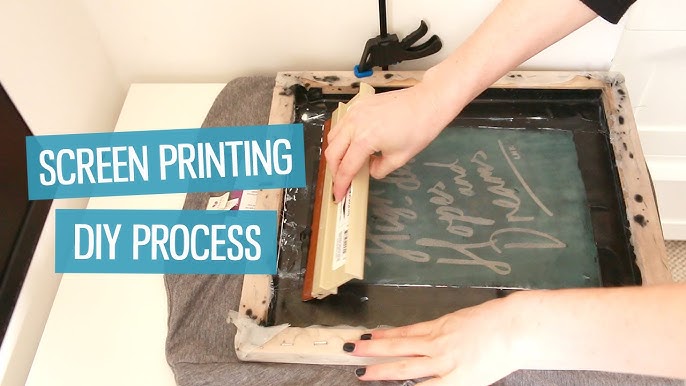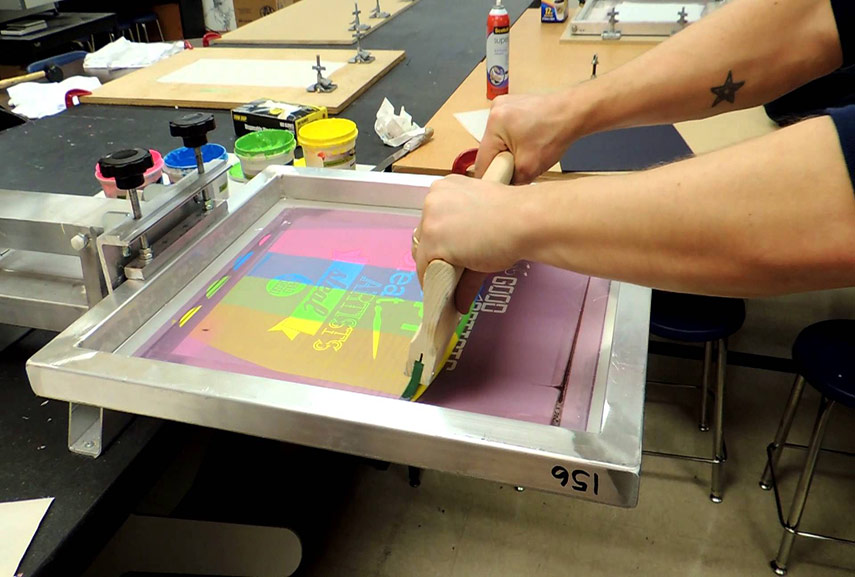ChatGPT said: 10:9 Design Abilene: the best team for custom apparel and branding
Wiki Article
The Important Guide to Understanding Screen Printing and Its Versatile Makes use of
Screen printing has an abundant history that dates back to old times, developing right into a sophisticated method used throughout different industries today. This guide checks out the details of the screen printing procedure, outlining its applications in fashion, marketing, and home decoration - 10:9 Design reviews. Recognizing these basics can open up creative potential for both commercial and imaginative jobs. The following sections will certainly expose vital pointers and strategies to enhance one's screen printing endeavorsThe History of Screen Printing
Screen printing has roots that trace back centuries, its development shows the technological and artistic innovations of different societies. Coming from ancient China, the technique was at first utilized for enhancing textiles and later spread to Japan, where it came to be essential to Ukiyo-e woodblock printing. The method changed to Europe in the 18th century, where it gained popularity among craftsmens and business printers. The invention of image emulsion in the 20th century transformed screen printing, enabling for more detailed designs and greater efficiency. Musicians like Andy Warhol additionally thrust its appeal, using the tool to produce famous jobs that combined commercialism and great art. By the late 20th century, screen printing had developed itself as a flexible strategy, used in vogue, advertising and marketing, and art. Today, it continues to progress, integrating electronic technology and increasing its applications across numerous markets.The Screen Printing Process Explained
Screen printing transforms creative visions right into concrete layouts via a series of exact actions. Originally, an image is developed and then transferred onto a screen, commonly made of fine mesh material extended over a structure. A light-sensitive solution is related to the screen, which is revealed to light, hardening in areas not covered by the picture. After rinsing the unhardened solution, a stencil is created.Next off, the screen is put over the substratum, whether it be fabric, paper, or one more material. Ink is then pushed through the open locations of the pattern utilizing a squeegee, transferring the style onto the substratum listed below. This procedure can be repeated for several colors, requiring different screens for each hue. Finally, the published product is treated using warm to guarantee the ink sticks effectively, leading to a long lasting, vivid layout ready for use.
Sorts Of Screen Printing Techniques

Furthermore, specialized techniques, such as discharge screen printing, eliminate dye from the fabric to create softer prints, while aluminum foil screen printing uses metal foil to achieve a shiny surface (10:9 Design contact). Each method offers unique features, catering to different creative requirements and production ranges, ultimately expanding the possibilities within the screen printing domain
Applications of Screen Printing in Various Industries

Additionally, the signs and advertising markets make use of screen printing for developing attractive screens and banners. This approach permits bold colors and intricate styles that catch attention. In electronics, screen printing is used for applying conductive inks to circuit card, important for component links. Additionally, the home style industry accepts screen printing to generate distinct layouts on fabrics and wall art. Overall, screen printing acts as a crucial device across diverse fields, enhancing items with personalized and aesthetically appealing graphics.
Tips for Successful Screen Printing Projects
While embarking on a screen printing task, careful attention to detail can significantly improve the final result. First, selecting top quality materials is important; this includes the screen, inks, and substrates. Using suitable mesh matters can affect ink deposition and detail resolution. Prep work is similarly important; complete cleaning of screens and correct exposure times guarantee crisp prints.Next, exact registration is essential for multi-color prints. Utilizing alignment tools can aid attain exact layering. Furthermore, testing prints on scrap products before production aids identify prospective problems without wasting resources.

Often Asked Questions
What Products Are Finest for Screen Printing on Material?
Cotton and polyester blends are ideal for screen printing on fabric due to their durability and ink absorption. Additionally, specialized fabrics like silk or canvas can generate distinct structures and coatings, improving the total design top quality.Just how Do I Tidy and Maintain Screen Printing Devices?
To preserve and clean up screen printing equipment, one need to consistently clean screens with ideal solvents, evaluate squeegees for wear, lubricate moving parts, and shop all items in a completely dry, dust-free setting to prolong their life-span.What Are the Ecological Influences of Screen Printing?
Screen printing can have substantial environmental influences, consisting of chemical waste from inks and solvents, water use throughout cleaning processes, and energy intake. Sustainable techniques and green materials are essential for reducing these unfavorable results.Can Screen Printing Be Done in the house Effectively?
Screen printing can be properly done at home with the best materials and techniques. Hobbyists can develop high quality prints, though success depends upon their skill degree, tools, and understanding of the procedure entailed.
What Are the Expenses Connected With Starting a Display Printing Business?

Starting a screen printing service involves prices for equipment, materials, and work area. Initial expenses generally vary from a few hundred to several thousand bucks, relying on the scale, quality of equipment, and preferred manufacturing capability.
Screen printing has a rich history that dates back to old times, advancing right into an innovative strategy used across different industries today. Another method, rotating screen printing, utilizes round displays, facilitating continual printing on textile rolls, thus improving performance for large productions. In addition, specialty strategies, such as discharge screen printing, get rid of color from the material to develop softer prints, while foil screen printing applies metallic aluminum foil to achieve a shiny finish. In the style sector, screen printing is commonly made use of to develop vivid layouts on clothing, enabling brands to showcase their unique styles. Cotton and polyester blends are perfect for screen printing on material due to their longevity and ink absorption.
Report this wiki page